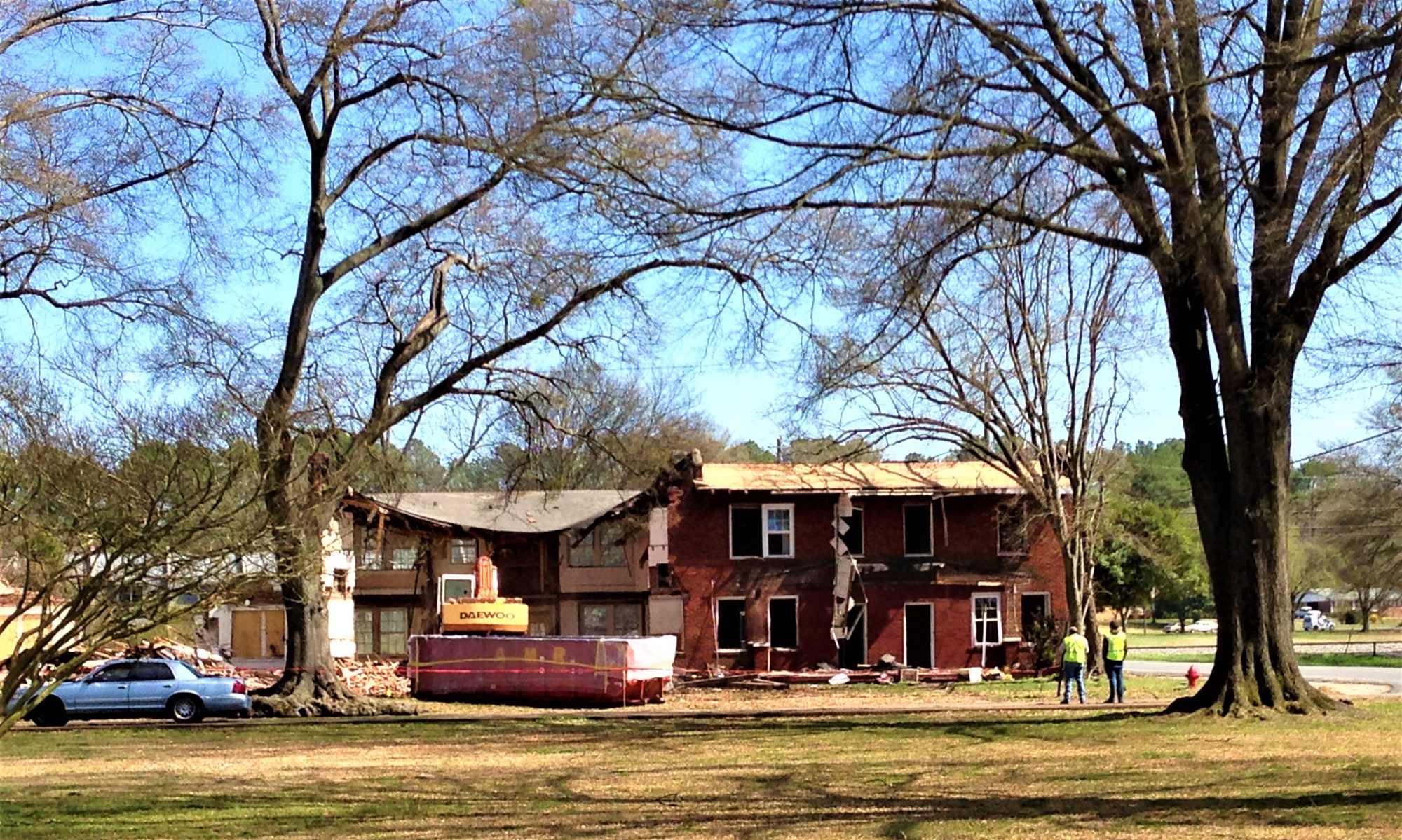The Cotton Mill-2015
I know my Daddy was a hard working man. I remember being very young, back when we lived over on Simmons street and Daddy would come home from the mill. I rushed to meet him, and most of the days he would grab me up and give me a hug. Some days though, when he had been working right up until the last minute before the whistle blew, he would still have the grease and oil from working on looms on his hands and he had to go clean up before I got my hug.
Mom didn’t like all that mess in her bathroom sink, so Daddy had a little container of kerosine and some soap he kept out next to the back steps, along with some rags with which to wipe his hands. He’d get most of it off his hands, then finish up in the bathroom. I know he was tired, especially on the days he worked over. Still, he always had a little time to play, whether it was throwing a ball around or going out to where the beagles were penned up and letting me play with them a little.
Loom fixers were essential back in the cotton mill in the 1950’s. Good loom fixers, like my Dad were sought after. They moved around from “upkeep to upkeep” inside the weave room, getting the better set of looms to look after as they became more proficient. New fixers got the worst running looms and had to ask for help from the older more experienced fixers sometimes.
I never realized how hard working in that cotton mill could be until after I was sixteen years old. That was the age in which a student could get a summer job in the mill and make themselves some “good” money. A lot better money than caddying up at the golf course, or working bagging groceries at the Piggly Wiggly. So, in the summer of 1967 I got myself a summer job in the mill.
By that time, my Dad had worked his way up to being an Overseer in the mill. He was the “boss” over the second/third shifts in the weave room. My Dad didn’t believe in doing family any favors though. I ended up doing a job called “taking up quills” We’d take a little buggy and go around to every loom and fetch the empty wooden quills on which the filling yarn had been wound. We’d dump the container into which they fell, in our big rolling buggy, and when that buggy was full we’d take it to the “quill machine” It was there that the quills were reprocessed to be sent back up to the spinning room. It was the location of one of the strangest sights I can ever remember.
Me and Kelley ( a teacher at our High School who also had a summer job in the mill) had filled our buggies up to almost overflowing and were bringing them to the machine. The dumping station was a circulating belt which eventually fed into a smaller belt which took the quills upstairs. A lot of times there was a little yarn left on them and the quill machine operator was responsible for getting that yarn off before the quills got to the smaller belt. There had been a large influx of quills and the operator was standing in between the large cirulating belt and the smaller belt buried chest deep in slowly moving wooden quills. With his arms outstreched and pulling the remnants of yarn off of the quills he looked like some strange multicolored ghost with stringlets of light hanging in all directions off on him. He was covered in sweat and it dripped from his face and neck onto the remnant yarn. “Damn” Kelly whispered, “I hope he doesn’t get buried” He didn’t.
There was no air conditioning in that mill back in 1967, just humidity. The more the humidity, the better, because the looms ran better when the humidity was high. They even had “humidity heads” built into the ceiling spewing out moisture into the air. It has hot that summer. Over 100 degrees inside that weave room most days and with that humidity, it was brutal.
I came home most days and just went to bed and slept for 10 hours or so. I didn’t feel much like doing anything else.
I developed a very healthy respect for my Dad, and all of the other men from our community who had been working in that place for most of their lives. They were tough men. Most of them were good men. Many of them, they just don’t make ’em like anymore. My Daddy was one of them, as was many of yours my friends. I met and worked with a lot of them that year and in the subsequent years in which I worked in that cotton mill. I will have to admit that the next summer I asked ol’ Henry Rider about a job before I did my Dad, and he put me to repainting the walls. It was a lot better than collecting quills!
I don’t know what it’s like in there today. I haven’t been in a weave room in a score or more of years. I do know how hard of work it used to be though. Hard..hard work.

